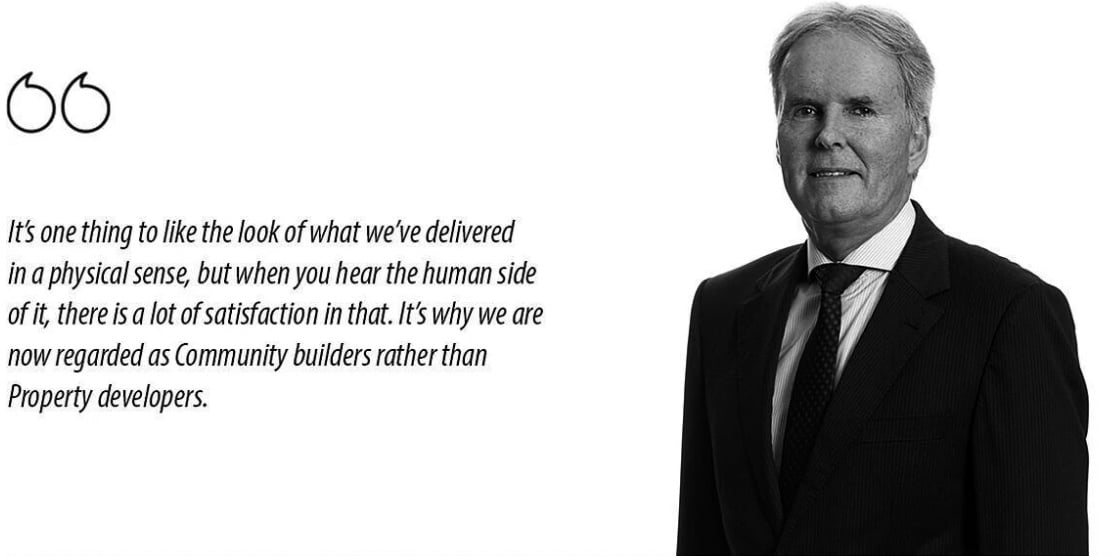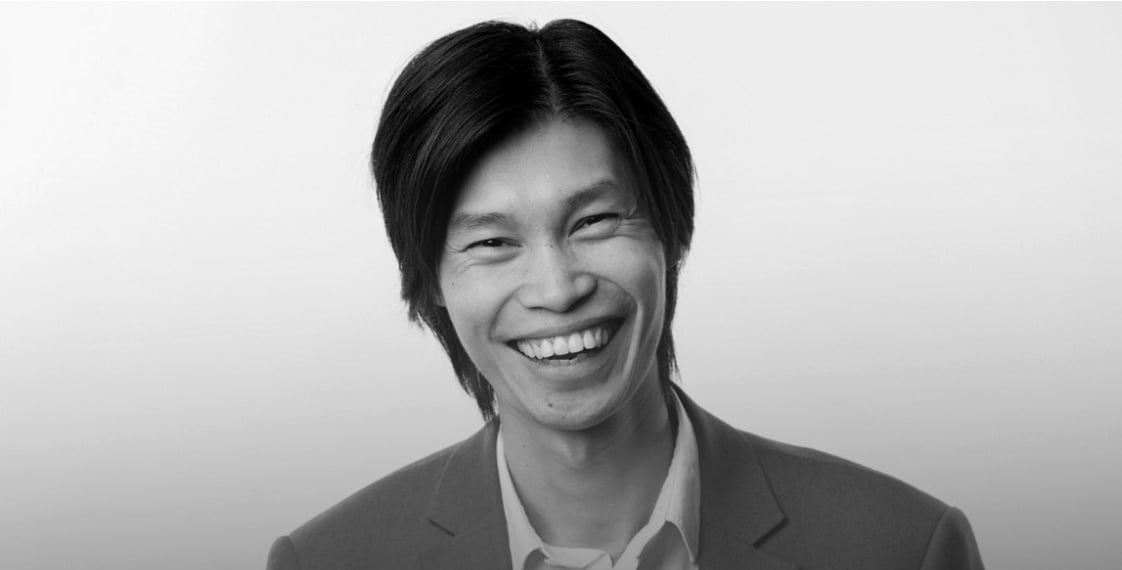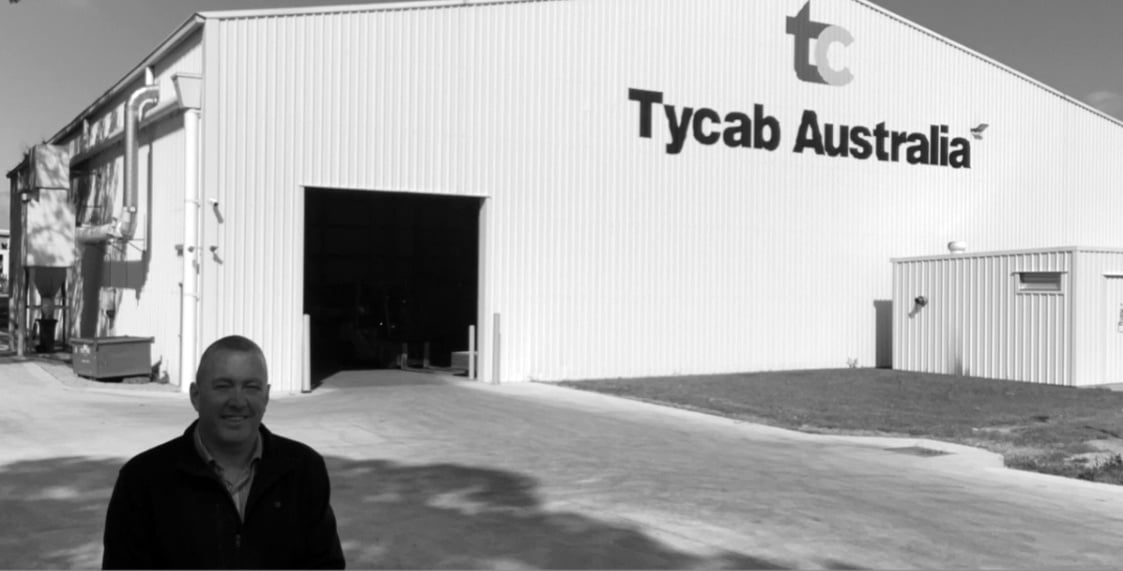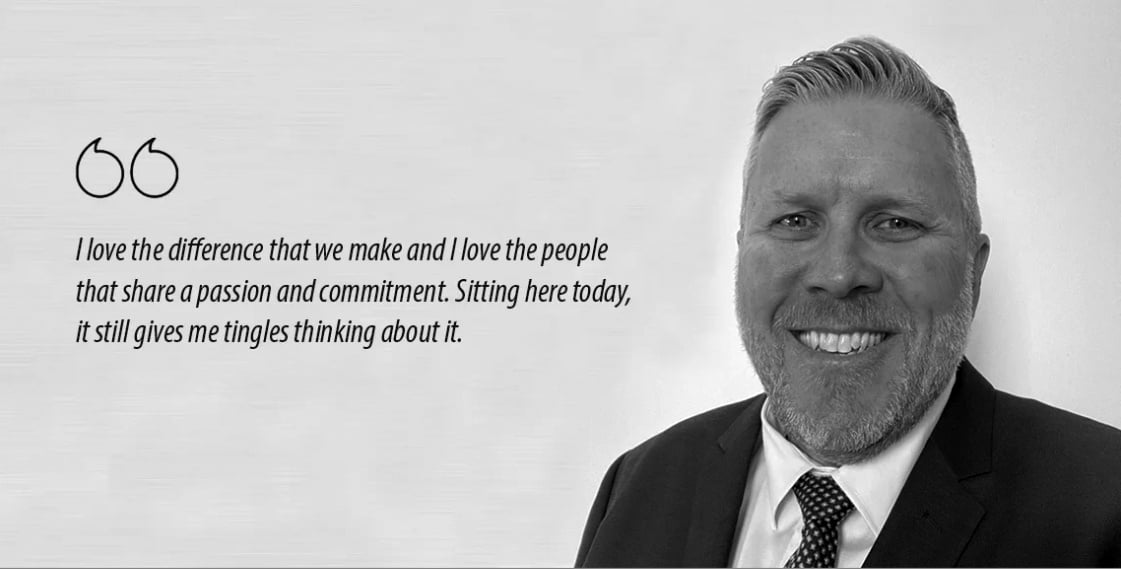4 min read
A Lead In The Market
Market Ease Digital was founded by CEO, Mr Binh An Nguyen, in 2006. In the last decade, Binh and his team have helped several medium and large...

When Bob Sharpless (Syndicate 34) met Maha Sinnathamby in Perth in 1984, he had no idea of the extraordinary community that they would one day build together. In 1985, they relocated to Brisbane and began a series of small-scale commercial property developments under the Mur Group banner. During the late 80s, the commercial property markets went extremely quiet, and it was during this period that Bob and Maha formed a daring and, what would eventually turn out to be, visionary idea for what would become Springfield City Group.
To understand the trajectory of Bob’s career, it is interesting to see the different paths that led to his eventual role as Deputy Chairman of Springfield City Group. After starting out as a Civil Engineer, he began working as an Engineer for the WA Government. After three years he then started his own consulting company and at the same time commenced his MBA. Two years later having completed his MBA he was looking for a change in career seeking greater financial rewards. For Bob, engineering seemed to be a bit of a slow way of working oneself to a higher rung on the professional ladder he envisioned for himself. The two choices that appealed to him were Investment Banking or Property Development. Around this time, he met Maha, who had formed a business in Perth known as the Murdoch Group. Bob joined Maha and in September 1985 they both moved to Brisbane and established the Mur Group. In 1991 Maha found a unique plot of land that was for sale in the outskirts of Brisbane. Both coming from Perth, they did not have the same view of the property that someone from Brisbane would probably have had; it had no infrastructure, topography that made it a challenge to build on, and at that time, was seen as being in a highly undesirable location.
To Bob and Maha, they saw this as an opportunity that held many undeniable risks, but incredible rewards, “Initially for both of us, it was a lot of gut feel and instinct and it’s very unusual to find nearly 3,000 hectares of land so close to a capital city. Eventually, we took the opportunity to acquire the land. We managed to enter into some conditional arrangements to pay it off over time, and then we started to think about how one would convert the property into something that could be lucrative”.
A common theme amongst many successful executives is that of seeking and soaking up knowledge from everywhere they can, and Bob and Maha were no different. “We looked at many Master Plan Communities that had been built, particularly in the US, and took some advice from the different consultants that were around at the time - planners, surveyors and others. We spoke with them about what would be involved and what it would take for us to reach our goals. After these meetings, our aspirations continued to grow. The more we saw what was happening in other parts of the world and other large residential communities, the more we could see the potential and that began to inform us of what we could do here, and how we could expand on those ideas in unique ways".
To this day, the journey keeps growing and growing. Bob says, “We continue to do things that add value, and we bring things to the project that are opportunities - things we’ve seen that we’ve liked, or think are best practice”.
One striking difference that sets aside Springfield City Group from other developers is the fact that they have been able to maintain and develop their vision with autonomy. As Bob explains, “Usually on a project of this scale, the first owner has a big vision, but can’t afford it and goes broke. The second owner buys it because it’s cheap but doesn’t really have a big vision, then it’s owner number three who comes along and converts a lot of that work into financial success. Springfield City Group is a very much against the odds success, as we are still the same owners of the project from when it started. We weren’t a large organisation with a lot of financial resources that took on a large project, we were a very skinny organisation that did so”.
Of course, as with any project of this magnitude, there have been tests along the way. The GFC was a huge financial challenge to the organisation. “We were never in danger of being in breach of our finances, but a private company does try and squirrel away some money for a rainy day hoping you won’t ever have to use it. Certainly during the GFC we were putting money back into the business to support it. As is often the case with small businesses in these situations, everyone was being paid except the owners, which is sometimes one of those things you need to do for the company to survive.
“There is always something that comes out of left field that you weren’t expecting. The more successful you become, the bigger the target you are. Not for a minute do I ever think that we are safe - you still have to remain agile, keep an eye on the ATO, increases in property-based taxation and all different types of risk issues that are part of modern corporate life”.
Building Greater Springfield has been very rewarding for the team in many aspects. Using a Master Plan to create facilities and dwellings and watching that thrive and grow has been extraordinary. Over the years, their efforts have been acknowledged with many prestigious awards:
Of all the awards that the team has won, Bob has found much personal joy and fulfillment in the community building that Springfield City Group has achieved. “We have an Indigenous school here that we helped create which everyone at the time said was not a smart move. It’s called Hymba Yumba and started off taking girls who were with child who had never been able to complete their schooling because they had become pregnant very early. We arranged for the school to get access to land and helped them obtain funding and that school is now co-ed with 250 students and is seen as one of the shining successes of Indigenous schooling throughout Australia. It was an unusual thing for us to get involved with, but we felt quite strongly that this was something we should do. We had the potential to do it, we had the land, and the social conscience that sets this project apart from being just a property development project in the residential subdivision space.
“We have been supporting organisations that add value to our project for a long time. We have academic awards for all of the schools here in Springfield. There are financial awards and we have someone here full-time who manages our Education Business, who liaises with all the schools. Every two years we have a Festival of Learning with all the 11 schools we have where the headmasters, teachers and students come together and collaborate. To us it’s a normal way to behave, but in the Education Industry, it is very unusual to have the state and private schools and the Indigenous school, all sharing activities. For us that is just a natural part of trying to create a community. There are different types of scholarships available, including assistance with costs in attending the university. There’s money that goes into the new sports stadium that is being built here for the Brisbane Lions. We are approached by a lot of organisations, and we try to help where we can, prioritising those that we think are doing a good job. Particularly those organisations that are looking after or are based in our community”.
The growth of Greater Springfield continues. “Now approaching our 30th year, we would say we are only about 25% through the project, but probably half-way through the project life. Flipping that, that means in the second half of our project life, we have three times the work to do that we have just done. Next year, we will celebrate the 30th anniversary of acquiring the property. We have a lot more development to do. For the residential part of the project, the current number of 48,000 residents will go to 140,000, and then we’re trying to create employment for the people who live here. We have an aspiration to create one job for every three people who live here. Essentially, we’re trying to create 50,000 jobs. The process to doing that, is we’re trying to identify those business themes that are going to create the future employment that can be located hopefully in our development. We are strong believers that you ideally work close to where you live”.
In creating Greater Springfield, which is made up of six suburbs, Springfield Lakes, Springfield, Brookwater, Augustine Heights, Springfield Central and Spring Mountain, one of the most rewarding aspects for Bob is when they hear of the impact the project has made on the people who either live here or are generally from this area. In an area where there was absolutely no aspiration whatsoever from the people who lived there, there are now great schools and a university. Many times, kids get up and say they were the first member of their family to ever graduate or go to university, and what an impact the project has made on their expectations and aspirations for their futures.
Bob says, “It’s one thing to like the look of what we’ve delivered in a physical sense, but when you hear the human side of it, there is a lot of satisfaction in that. It's why we are now regarded as Community builders rather than Property developers.”
For Greater Springfield, COVID-19 posed many challenges, but also accelerated what living and working closer to home would look like. When Bob and Maha initially tried to attract businesses to the area, the argument those businesses always made against moving was that people like to be near the Brisbane CBD where there was the buzz, the restaurants and cafes. Bob says, “We’re now not getting that message from them. A lot of companies are having the experience of not having all of their workforce located in one high rise building. And, the technology has meant that they can do their work remotely. I know many CEOs who used to spend days away from their families travelling, staying in apartments or hotel accommodation, who have told me that they will never go back to that, the reasons being that they not only don’t want to but have found they can run the business just as well within the new structure. For us, the situation has played to our strengths because we’ve always felt that a better model for people is to work closer to where you live, so the lockdown has allowed people to have a trial of that and a lot of people have said that they actually like the concept”.
Twenty years ago, Bob was introduced to The CEO Institute, and thought it would be worthwhile giving it a try. “I was interested, because the nature of what we do here can be a bit Springfield-centric, and I felt that The CEO Institute would give me some insight into what was happening elsewhere and in other sectors. Over time, that is why I have continued to stay involved. Whilst I’m confident in what we’re doing, it doesn’t mean that one shouldn’t be aware of what is going on elsewhere and how other organisations are affected who are perhaps more connected with what we call ‘the big end of town’.”
Over the past twenty years, Bob has found the structure of the Syndicate has remained the same, although the elements of who are members and who is the Chair are more fluid. “We have always had guest speakers, and obviously the membership in the group has continued to change over time. Ray Weekes has been the Chair of my Syndicate for quite a while and he is a big part of the success of the group. Whoever is the Chair of the group is really critical to its longevity and the quality of the people who join.
“I have found that some members use the Syndicate as an opportunity to share more personal stories. So, it’s a refreshing mix of mostly professional conversation and advice, with some individuals choosing to share other aspects of their lives, as well, which is a great strength. I am always appreciative to hear of other people’s worries and concerns, because they are often different from the ones I have, so it helps me put my own in perspective”.
What keeps Bob returning as a member after so many years is due in part to the relationships he has built, “The friendships over time, particularly with Ray, that have been established have been incredibly rewarding. There is a group of us that meet for lunch every three months, made up of mostly former members who have retired or moved on. The networks are enjoyable, and it’s a way to keep track of how people are doing, because everyone always goes through a bit of a cycle. Some people were at a high point doing high powered jobs, and then either retired or move into a more portfolio type career, so watching how different people manage that process and some of the learnings from that is always quite useful, because you never know - one day it might happen to me.
“I’ve never viewed my membership in the group as a way to drum up business or get deals, that’s not my style and it was never suggested to me that that was a reason to join. I just find it’s a good way of keeping abreast of what other organisations are dealing with. The guest speakers are always subject experts trying to give you an insight into something that might be an emerging issue. It’s a good way of keeping connected with corporate-type issues. Unless travelling or something else comes up, I have found the discipline of the monthly meeting to be something that is easy to manage, and Ray does a great job in keeping the group energised and in making sure we don’t get complacent”.
For more information on Greater Springfield and Springfield Group, please visit: https://www.greaterspringfield.com.au.
The CEO Institute, established over 25 years ago, helps business leaders like you connect with your peers to share skills, insight, and experience. The CEO Institute's leadership programs are available globally. Click here to read more member success stories.

4 min read
Market Ease Digital was founded by CEO, Mr Binh An Nguyen, in 2006. In the last decade, Binh and his team have helped several medium and large...

4 min read
In the non-traditional sense, Craig Moulin (Syndicate 1) had a typical first decade in his career. Starting as a storeman and then forklift...

7 min read
Luke Macdougall, CEO of Fire Safe Australia and New Zealand, started his career in the marine industry as a Shipwright by trade. After...